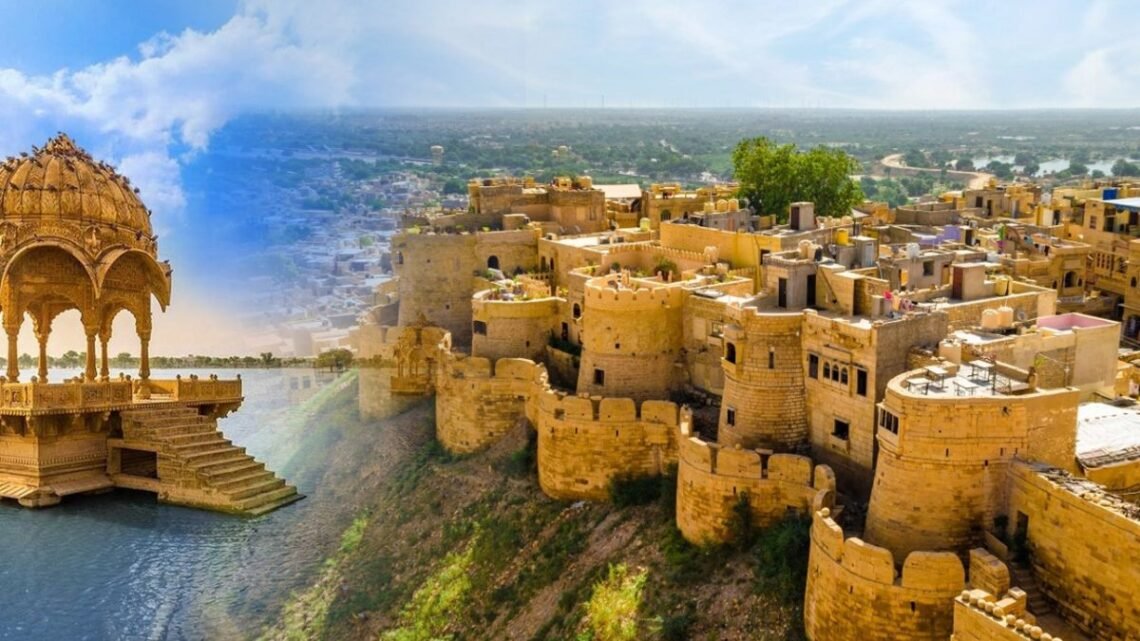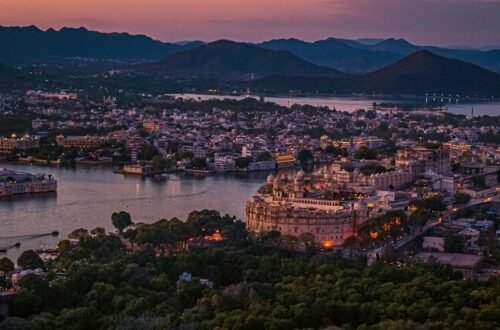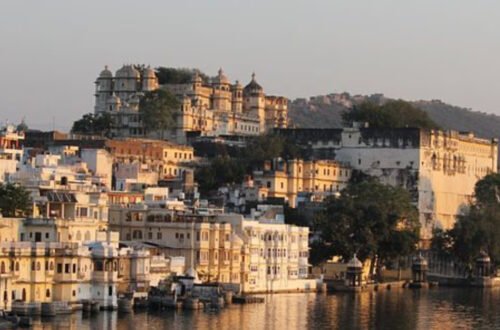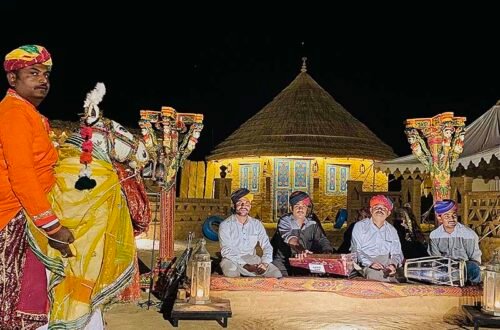Rising like a golden mirage from the heart of the Thar Desert, Jaisalmer Fort stands as a sentinel to centuries of history, culture, and survival in India’s most arid landscape. Often referred to as “Sonar Qila” or the Golden Fort, this architectural marvel isn’t just a monument—it is a living, breathing city that continues to define the spirit of Jaisalmer and its desert surroundings. For those exploring the city’s historical layers and cultural richness, starting your journey with a trusted Taxi service in Jaisalmer ensures both comfort and deeper local insights.
The Genesis of Jaisalmer Fort and Its Desert Context
Built in 1156 AD by Rawal Jaisal, a Rajput ruler, Jaisalmer Fort was strategically constructed atop the Trikuta Hill, a natural sandstone formation that offered both height and protection. Its location was no coincidence—the fort stood at the crossroads of important trade routes linking India to Persia, Arabia, and Africa. In a land as unforgiving as the Thar, this fort provided sanctuary, administration, and a thriving economy built on trade.
The fort’s very material—yellow sandstone—captures the sunlight in a way that makes the structure appear to glow. This not only contributes to its beauty but also roots it firmly in the desert’s natural palette. The fort is not just surrounded by the Thar Desert; it is part of it.
Architectural Adaptation to Harsh Terrain
The design of Jaisalmer Fort reflects ingenious adaptations to the desert environment. Its high walls, narrow lanes, and thick stone structures regulate heat, keeping interiors cool even in the sweltering summers. Rainwater harvesting systems, step wells, and underground reservoirs show how the fort’s builders turned the desert’s limitations into self-sustaining assets. These architectural choices not only preserved life inside the fort but also shaped how settlements in the Thar were built for centuries to come.
This deep environmental understanding gave rise to a desert identity—resourceful, resilient, and in harmony with nature. Jaisalmer Fort wasn’t just defending its people from invasions; it was teaching them how to live with the desert, not against it.
A Cultural Beacon in the Thar
Beyond its physical presence, the fort served as a cultural melting pot. It was home to Rajputs, Brahmins, traders, artisans, and nomads. Over time, a distinctive desert culture evolved—seen in its music, dance, crafts, and cuisine. The use of mirror work, embroidery, and camel leather in local art forms mirrors the aesthetic sensibilities shaped by the desert’s stark contrasts and vibrant hues.
Religious and cultural festivals like Desert Festival, Teej, and Diwali take on a special flair inside the fort’s golden walls. These traditions, nurtured within the fort’s boundaries, spread outward, helping shape the broader Thar cultural identity. Today, many visitors seeking an immersive cultural experience opt for guided experiences like the Jaisalmer one day city Tour to explore this legacy in depth.
Economic Lifeline of the Region
Historically, Jaisalmer Fort played a critical role in connecting the desert to distant lands through trade. Caravans passed through its gates, bringing in spices, fabrics, opium, and precious stones, while exporting wool, silk, and dried fruits. The fort provided security and customs control, making Jaisalmer wealthy and influential despite its remote location.
Even today, the fort generates economic activity—not through trade, but tourism. Hundreds of artisans, shopkeepers, and guides depend on the fort for their livelihoods. The fort’s preservation directly affects the socio-economic health of the region, proving once again how central it is to the identity of the Thar Desert.
The Living Fort: A Symbol of Continuity
Unlike most forts in India, Jaisalmer Fort is still inhabited. Around 3,000 people live within its walls, adding a dynamic, lived-in quality that enhances its historical significance. Temples, homes, shops, and cafes coexist with ancient bastions and cannons. This coexistence of old and new reinforces the fort’s ongoing influence over the region.
Walking through its alleys, you witness the continuity of life, culture, and tradition. It becomes clear that the fort is not a relic of the past but a heartbeat that continues to shape identity, thought, and daily life in the Thar.
Connecting Jaisalmer Fort to the Desert Beyond
Jaisalmer Fort is not an isolated monument—it’s the spiritual and historical gateway to the desert it crowns. Its influence spills beyond the city walls into the dunes, where desert safaris and cultural camps bring the Thar’s magic to life. Those eager to explore the desert further often choose the One Day Sam Desert Tour to experience camel rides, local performances, and a night under the stars. This tour, like the fort itself, connects people not only to a place but to a unique way of life.
Conclusion: A Monument That Breathes Identity
Jaisalmer Fort is more than stone and story—it is the nucleus of the Thar Desert’s identity. Through its architecture, culture, economy, and enduring human presence, it reflects the values and spirit of desert life. The Thar is not just a sea of sand—it’s a civilization, and Jaisalmer Fort is its lighthouse. To understand the desert is to walk its golden ramparts, feel its ancient stones beneath your feet, and listen to the whispered tales of those who shaped it.
Whether you’re a traveler, historian, or cultural enthusiast, your journey through the Thar Desert begins and ends with the fort that gave it meaning.





